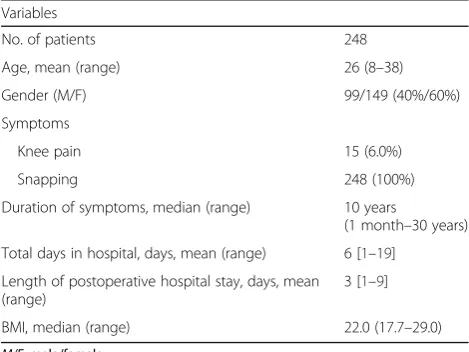Clinical outcomes of arthroscopic surgery for external snapping hip
Full text
Figure




Related documents
The existence of an audience that cares about good corporate governance and the visibility of the firm’s corporate governance practices to that audience is likely to predict the act
Such factors include, without limitation, inherent uncertainties and risks associated with mineral exploration; uncertainties related to the availability of future
First, drawing on the Human Poverty Index, it sets countries more exacting standards for the three core elements of human development – income, health and education – by looking
undergraduates that are not available at George Mason University nor any other P age 7.899.7.. university in the region. Key executives from the high technology industry predict
Laminar steady basic flow computations were performed for a discrete cylindrical roughness element submerged in the boundary layer along the leeward symmetry plane of both
Experimental observations have shown that the ratio v r /v is independent of total flowrate at every point inside the hydrocyclone and the assumption of turbulent flow (equation
This research study examines the customer orientation of service employees on customer satisfaction and commitment and retention in selected hotel in Sri
They focus on three elements affecting CBI: the relationship between government and bank in the formulation of monetary policy, the procedure for appointing the board of the bank
